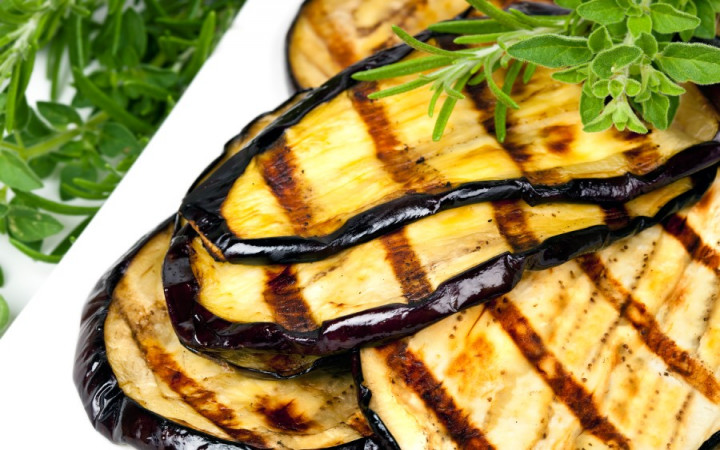Today’s Wonder of the Day was inspired by Vanessa. Vanessa Wonders, “Why are eggplants purple?” Thanks for WONDERing with us, Vanessa!
Have you ever eaten a guinea squash? How about a brinjal or a melongene? Perhaps you’ve tried an aubergine? No? None of these things? Well, maybe you have and just didn’t know it. These are all names for a food you might know as the eggplant!
Most people would probably guess eggplant is a vegetable. However, it’s actually the fruit of a plant of the same name. Eggplants are also closely related to tomatoes and potatoes. Eggplants grow wild, but they’re also grown as an annual crop in areas with a mild climate.
Eggplant is known for its fleshy, meaty texture. Although it is cooked in many dishes like a vegetable, it’s technically considered a berry. Have you ever looked closely at the inside of an eggplant? If so, you may have seen many tiny, soft seeds. The seeds are edible, but they have a bitter taste.
There are several varieties of eggplant fruits. Most are long and oval-shaped, like a gourd or squash. Colors vary, too. The most common color is dark purple. There is actually a color — aubergine — that resembles the purple of the eggplant.
A long, gourd-shaped, purple fruit is what most people think of when they hear the word “eggplant.” How in the world did something long and purple get that name? Well, way back in the 1700s, early European versions of eggplant were smaller and yellow or white. They looked like goose or chicken eggs, which led to the name “eggplant.”
The eggplant has been around for a long, long time. It’s native to India and Southeast Asia. In fact, the first known written mention of eggplant comes from a Chinese book on agriculture written in 544.
Raw eggplant has a bitter taste, somewhat like its seeds. When it’s cooked, though, it becomes tender with a rich flavor. Some recipes that feature eggplant recommend salting, rinsing, and draining the sliced fruit. This can further soften the fruit and cause it to absorb less fat during the cooking process. If you don’t salt and press eggplant before cooking, it will soak up fat and become greasy.
Today, eggplant is a popular part of many cultures. It’s common in recipes from France, Egypt, and Italy. You’ll also see it used in food across the Middle East and Asia. In fact, 90% of eggplant production comes from five countries: China, India, Egypt, Iran, and Turkey.
Have you ever eaten eggplant? If not, you’ve probably seen it at the grocery store. Its unique shape and color make it hard to miss!
Standards: CCRA.L.3, CCRA.L.6, CCRA.R.1, CCRA.R.2, CCRA.R.4, CCRA.R.10, CCRA.SL.1




